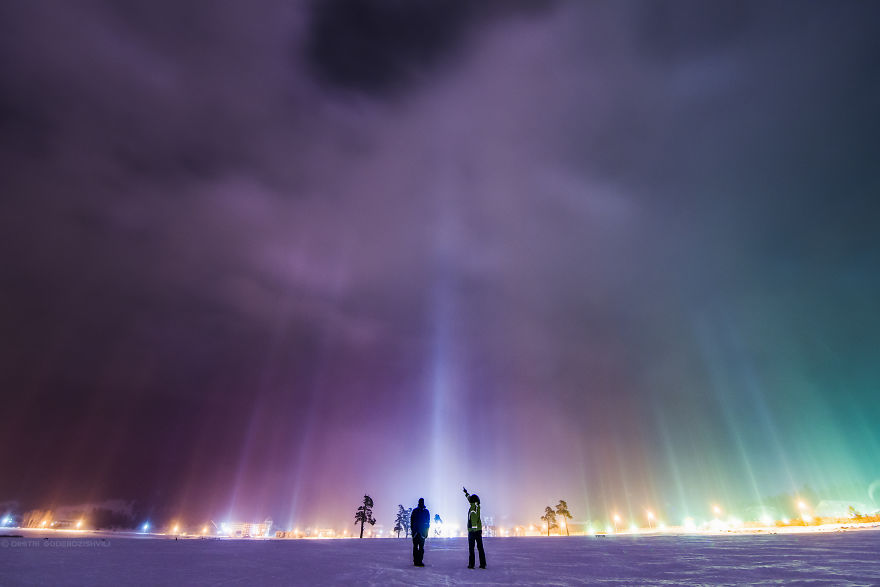
Unless you’re solely a studio photographer, it’s likely that working with natural light forms the cornerstone of your photography. The light from the sun has a huge variety of characteristics, and varies in strength, contrast and colour wildly, creating a host of different effects for photography.
While there’s not much you can do to alter the source of the light, these tips will help you make the most of shooting with natural light in any situation.
1) Understand the qualities of light
Understanding the qualities of the different characteristics of natural light is essential
To become a more accomplished photographer it’s essential to have a strong understanding of the qualities of light and its impact upon images. Light can be soft or hard, warm or cool and significantly vary in strength. Natural light is constantly shifting within these characteristics, depending on the season, the time of day, your position on the planet and the weather overhead. The usual advice offered to photographers is to try and shoot during the golden hour – the 60 minutes or so after sunrise and before sunset – as the light is rich, warm and the longer shadows creates more depth and texture for photos. While it is true that the golden hour offers saccharine opportunities, to ignore the majority of daylight hours is creatively limiting.
On a clear day, the sun provides a revolving range of different types of light, beginning as it starts to seep into the sky shortly before dawn. This is known as the Blue Hour, and the same light characteristics can also be found at dusk before the stars are shining bright. At this time of day there’s no direct light, but the upper atmosphere is picking up some sunlight and acts as a very even and gentle light source. As there’s a lack of contrast the light is soft and ethereal and is loaded with bluish hues, but as the light volume is very low, it can be a challenge to shoot with a fast enough shutter speed to capture sharp handheld images.
During the Blue Hour the light is soft and ethereal
Moving into the golden hour, the light rakes across the horizon creating long shadows and a 3D relief to the land, adding extra depth and interest to scenic shots. The red-yellow hue of the light gives a warm colour and enriches the saturation. Shooting during this time of day will yield good rewards, but often it’s not convenient to be out photographing during this window, so it’s important to be confident shooting in other types of daylight too.
In the Golden Hour the light creates interesting depth and warm colours
The light during the middle of the morning – and later on in the middle of the afternoon – is much less dramatic but provides good all-round illumination for most photography. There is no longer the strong colour cast found at dawn or sunrise, but the light is still warm and colours appear more natural. The angle of the sun provides some depth and interest to the light, but the contrast is easier to control and you’re less likely to encounter exposure problems as the dynamic range isn’t as challenging.
Light in the morning and afternoon is less dramatic, but still pleasing
Come midday, the light is considered to be at its harshest. The overhead sun means light falls at the steepest of angles, creating an intense contrast and offering the most neutral colour cast. For lots of subjects, the light during the very middle of the day can be unflattering due to the angle and intensity, so lots of photographers try and avoid it. If you’re shooting portraits in this type of light, you’ll fare better by either seeking out shade, or have the sun backlight your subject and expose for the detail on the face. That is unless you want to make use of the harsh contrast of this direct light to tell a story in your image. There is a place for everything.
You'll encounter a strong contrast at midday, but it can work well for some subjects
When conditions are overcast, the light changes less throughout the day and the contrast and colour remains fairly consistent, with just the brightness altering as the clouds thicken or the sun lowers. Overcast light has a soft and cool appearance and the cloudy sky acts as a giant softbox, reducing the contrast and colour saturation. While this soft light can be good for portraits, the lack of contrast makes textures more difficult to capture and detail can become a little muddy.
Overcast conditions create soft light with few shadows, but also less detail definition
As natural light comes in so many varieties, the only way to truly understand how the different characteristics effect images is through experience. So don’t limit yourself to solely seeking out the golden hour, utilise the light throughout the day and study the light whenever you can.
2) Take advantage of window light
Window light is great for food photography as it is soft yet still directional
Using natural light isn’t limited to shooting outdoors, and wonderful effects can be achieved with window light. It’s great for both portraits and still life setups, as it’s soft, flattering and you don’t need to leave the house. The light is directional, so gives a good contrast with pleasing shadows, but is much gentler than direct sunlight. If you’re in the northern hemisphere, south facing windows will create the brightest illumination, allowing for faster shutter speeds to minimise camera shake. If you find the contrast is a little too strong for your liking, you can soften window light further by using a patternless net curtain, taping a sheet of baking paper to the window pane or by holding the translucent inner part of a reflector in front.
Portraits work especially well with window light
3) Control natural light with a reflector
Studio photographers know how the light from a studio flash can be sculpted with modifiers, filters and output adjustments, but similar can be achieved when shooting with natural light with the assistance of a simple reflector. These fold-away devices can be used to bounce light back onto a subject, helping to reduce contrast by brightening dark shadows and add interesting cross-light effects. The most versatile reflector are the 5-in-1 variety, that offer white, silver and gold reflective surfaces, a black side to flag the light and a translucent inner to diffuse direct sunlight. To access all of a reflectors surfaces you’ll need to unzip the outer skin and turn it inside out. The white surface reflects light more naturally, whereas the silver and gold skins increase the brightness and contrast, with extra warmth from the gold surface. The black fabric is used as a flag, to reduce the light hitting the subject to improve shadow contrast and edge definition. Reflectors are really useful for portraiture, macro shots and food photography, where contrast control is vital.
Use a reflector to bounce light onto a subject to lift shadows and add a catchlight to eyes
4) Camera settings to capture more light
Unless you’re shooting in bright daylight, it’s likely you’ll face a challenge to shoot with camera settings that both produce a good exposure and sharp, shake free shots. Once your shutter speeds reaches a certain level, it becomes more difficult to keep camera shake at bay. As a rule of thumb, it’s ideal to keep the number of your shutter speed higher than the number of your lens’ focal length. So if you were shooting at 50mm, your shutter speed should be faster than 1/50sec if you want to be confident of not encountering shake. There are quite a few other variables to consider with this safeguarding measure, including any image stabilisation systems, the crop factor of your sensor and camera handling, but as a general guideline the above works well. So while shooting with a slower shutter speed might not be advisable, there are two other ways to utilise more light for your exposures. Opening up your lens’ aperture will let in more light, and with every stop increase the amount of light able to enter the camera doubles. Using a lens that has a wider maximum aperture – such as a f/1. 4 – will let more light in when conditions are dimmer. The same goes for ISO, and so by increasing the sensitivity of your camera you can make more use of the available light.
Open up your aperture and boost your ISO when the light levels drop
If your shot requires a slower shutter speed, either through creative choice or necessity, it’s essential you keep your camera secure. The best way to do this is with a tripod and a wireless shutter, so you can be sure that no vibrations are transferred to the image during capture.
5) Shoot in RAW to cope with contrast
High contrast scenes are best controlled by shooting in RAW to maximise the Dynamic Range
One of the biggest challenges of shooting with natural light is coping with a strong contrast. Essentially you have three choices: embrace the contrast and make use of it in your image, try to minimise it by using a reflector or fill in flash, or attempt to control it with processing. The most versatile way to maximise the tonal detail in your image is to set your camera to shoot RAW files rather than JPEGs and process the images in software like Lightroom or Adobe Camera Raw. RAW files hold much more tonal data than their JPEG counterparts, and in the software it’s easy to bring back more detail in your highlights and shadows and maximise the Dynamic Range of the image. It also helps if you slightly underexpose your shot to preserve highlight detail, so dial in -1 stop of exposure compensation.
. digitalrev.com2018-2-2 03:00



